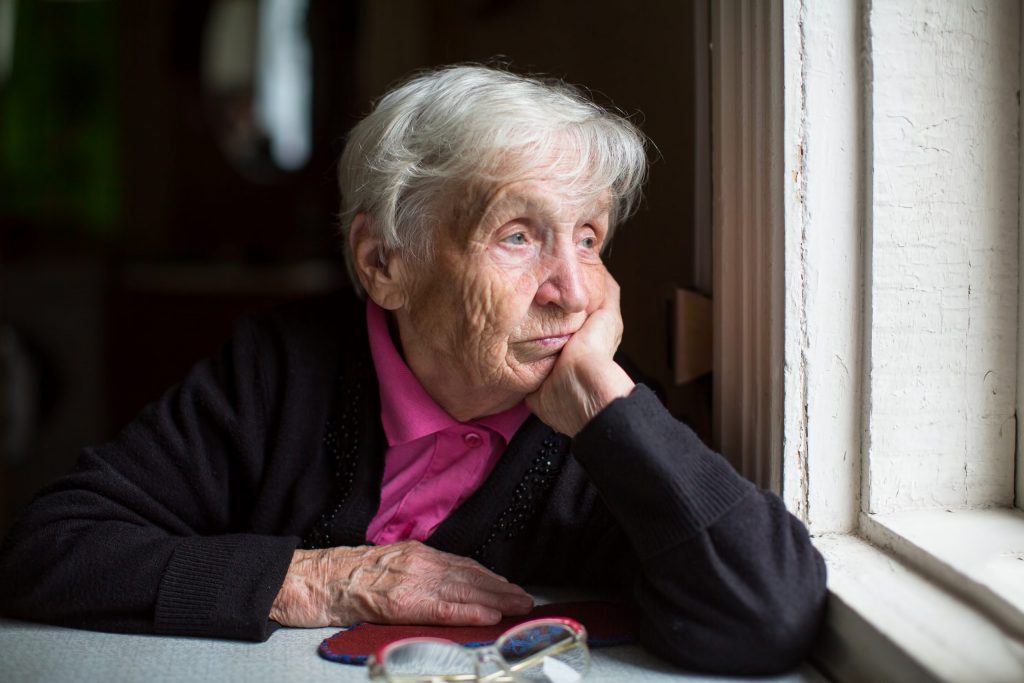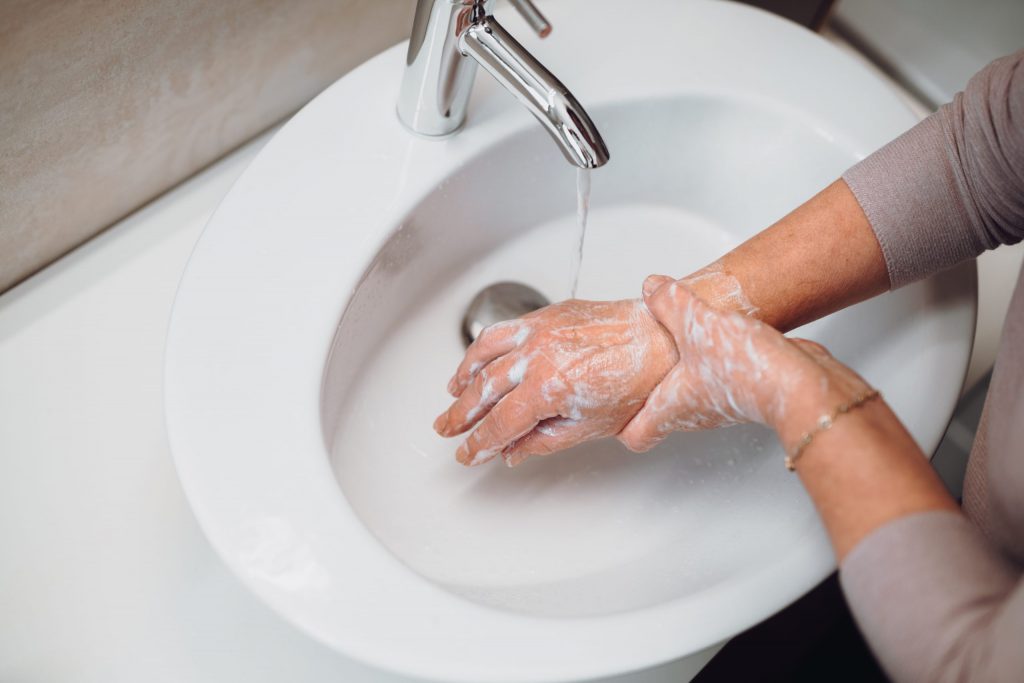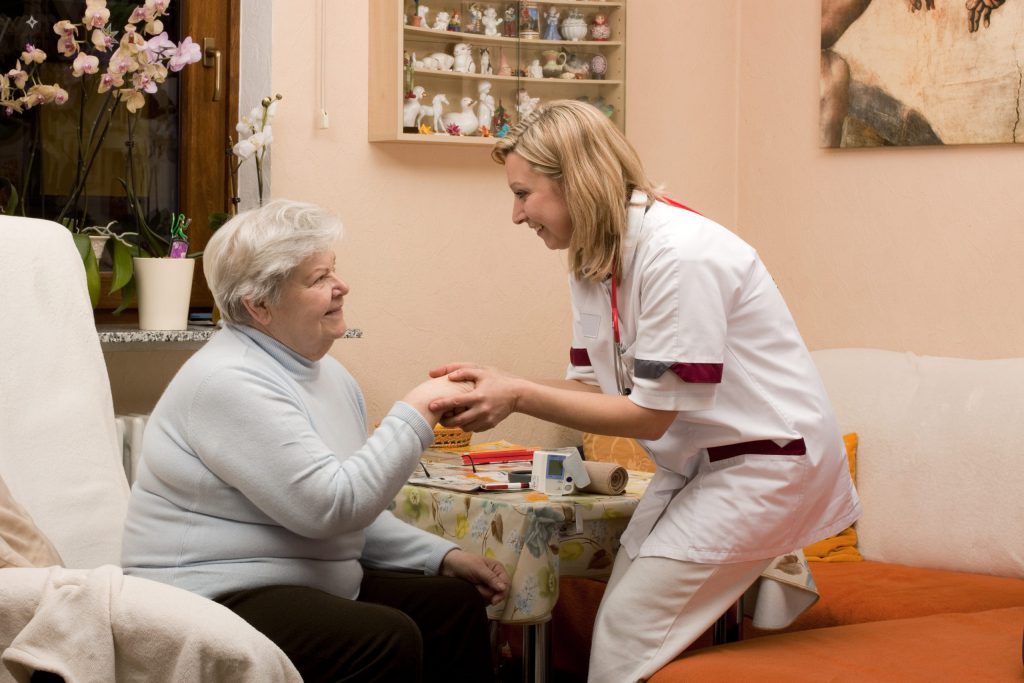Secondary Wounds and Covid-19
According to the CDC, Individuals over 65 years old, particularly those with underlying health conditions, are considered to be at the highest risk of suffering severe illness or death from COVID-19, the new coronavirus, that has led to the global pandemic. In order to prevent illness and decrease the spread, seniors and their caregivers are advised to adopt strict social distancing and stay-at-home practices wherever possible and to engage in frequent handwashing and hand sanitizing. Until a vaccine or effective clinical treatment is in wide circulation, these are the two primary methods of mitigating the spread of COVID-19 among the elderly, as well as for the general population.
However, as Vohra Wound Physicians cautions, and some early reports show, these necessary preventive measures—while crucial for combating the deadly coronavirus—may also have unfortunate secondary effects on the elderly population, posing new risks to their health due to the potential increase in wound development and complications. Therefore, now more than ever, it’s crucial for wound nurses, caregivers, and doctors to maintain vigilance around wound care management in elderly patients in order to prevent compounding negative health outcomes during the pandemic.

Social Distancing, Isolation and the Risk of Increased Wound Complications
Reducing contact with others by practicing social distancing (keeping at least 6 feet apart) as well as staying at home as much as possible is, to date, the most effective method for avoiding COVID-19 and reducing the spread, and this certainly applies to the most at-risk population, the elderly. Whether they are receiving in-home care or reside in an assisted living facility (ALF) or long term care facility (LTCF), seniors have been strongly advised to aggressively limit their contact with other people as well as refrain from engaging in any activity outside of their immediate environment that could bring them in contact with anyone outside of their primary caregiving team. While geriatric patients who are already confined to their beds with little to no mobility may not experience a change in their daily routines, new social distancing and isolation guidelines often mean that seniors who enjoyed a healthy level of activity or mobility prior to the pandemic may now be experiencing a dramatic decrease in their overall movement, whether in their own home or in their care facility. For example, a patient in an ALF who once moved between their room and other parts of the facility to either eat or socialize may now be solely confined to their room to avoid encountering or spreading the virus. Likewise, seniors receiving in-home care are likely isolating at home, and in most cases this decrease in overall activity means more time sitting or time spent in bed in their private living spaces. Nurses and caregivers for this demographic should be aware that a significant drop in patient mobility can have serious, negative health effects, contributing to and exacerbating wound development, particularly pressure injuries and other wounds caused by a lack of mobility, thus increasing the need for heightened wound care. Wounds that develop due to acute and sudden lack of mobility or chronic prolonged periods of immobility can cause significant health issues for the elderly and are one of the biggest challenges their nurses, doctors, and caregivers face on a daily basis. A lack of mobility can lead to the presentation and complication of pressure injuries, arterial insufficiency ulcers, venous ulcers, or, in the case of patients diagnosed with diabetes, diabetic neuropathic ulcers. Pressure injuries often develop in the elderly after prolonged periods of sitting or lying down leading to increased pressure at certain points in the skin where blood flow is disrupted and skin or tissue begins to break down. Pressure injuries are categorized by severity in 4 stages, and can present as a relatively minor wound to the epidermis with the skin still intact or as full thickness skin and tissue loss where bone may be exposed. Arterial insufficiency ulcers are a result of poor arterial circulation, and in patients who are experiencing decreased mobility due to COVID-19, caregivers and healthcare workers should take measures to increase arterial circulation when possible in order to prevent this type of wound development. Venous wounds, which typically appear in the pretibial area, are a result of venous hypertension or poor calf pump activity, both causes that can be exacerbated by a significant decrease in movement and activity. The presence of these types of wounds in an aging population, while common, are also general markers for poor health outcomes and can, due to infection, lead to premature mortality in some patients.Steps Nurses can take to Prevent and Treat Wounds During Coronavirus
So, how can nurses and caregivers prevent and treat wounds due to lack of mobility, yet still encourage patients to follow social distancing and isolation guidelines to reduce their risk of contracting COVID-19?- Awareness and risk assessment are key. It’s imperative for caregivers to quickly identify those patients who are at most risk for developing wounds due to their decreased activity levels and to develop a regular plan of care for the patient that includes wound care and management.
- Establish transparency. Because of social distancing, many elderly patients who live in ALFs or LTCFs may be cut off from their families and support systems, relying solely on their immediate nurses for all of their care. It’s crucial for nurses and other facility caregivers during this time to maintain transparent documentation and communication with staff and family members about wound care procedures and any new wounds that develop during isolation.
- Early intervention matters. By identifying and treating new or worsening wounds due to decreased mobility early and aggressively, nurses may be able to avoid serious infections in their patients and promote better health outcomes. For example, for pressure injuries, it’s crucial for a patient’s overall health that the wound be identified and treated at the earliest stage of development, before infection or tissue loss sets in.
- Encouraging safe mobility practices when possible. Caregivers to elderly patients should take measures to ensure the patient is engaging in as much activity as is physically recommended for their condition and that is safely following the CDC’s guidelines on social distancing and isolation for this vulnerable demographic. Even if they are confined to a somewhat small living area, geriatric patients should be encouraged by their caregivers to move around as much as possible in order to prevent wound development due to inactivity. When possible, discourage prolonged time spent sitting or lying in the same position, turn or reposition patients unless contraindicated, or consider adopting pressure-relieving devices if frequent movement isn’t possible.

Frequent Hand-Washing and Wound Development
Along with social distancing and staying at home as much as possible, the other primary technique for avoiding COVID-19 is frequent hand-washing for at least 20 seconds (and, when hand-washing is not possible, the use of alcohol-based hand sanitizers).
Aging skin on the hands is often thin, fragile, and vulnerable to injury, even when patients are engaged in common everyday activities. Elderly people are therefore at higher risk of skin injury and wound development on their hands due to the natural breakdown of their skin’s protective barrier and tissue. If a patient is washing and/or sanitizing their hands at a much higher rate in order to lower their risk of viral infection or spread, this could pose a clinical risk, disrupting the skin’s protective barrier on the epidermis and leading to tears or other hand-related wounds and skin degradation. If a wound becomes chronic, severe, or infected, this may pose a significant health risk to the patient and require more aggressive medical intervention.
Wounds in the elderly that develop due to frequent hand-washing, present a secondary challenge for nurses and caregivers who must treat the new wound quickly in order to prevent bacterial, fungal, or viral infection at the site, while still maintaining hand cleanliness practices in patients to avoid COVID-19. For many nurses and geriatric caregivers, this can seem like a bit of a catch-22, yet it is possible to simultaneously maintain cleanliness practices during a pandemic and still effectively treat any hand-washing-induced wounds to avoid further complications or need for medical interventions.
Nurses and caregivers can help to maintain the integrity of their patients’ skin while still properly and frequently sanitizing with the following products:
- Skin cleansers containing amphoteric surfactants or syndets to improve skin dryness, compared with standard soap and water.
- Lipophilic leave-on products containing humectants that decrease the dryness of the skin and reduce pruritus.
- Products with pH 4 to improve the condition of the skin barrier.
- Skin protectants and structured skin care protocols that can decrease the severity of incontinence-related dermatitis.
- Formulations containing glycerin and petrolatum which can reduce the incidence of skin tears.
If a wound presents on the hand due to frequent washing or sanitizing, it should be identified and treated as quickly as possible with moisture-balanced dressing to avoid complication and infection.

Wound Care is Critical in a Pandemic
Social distancing, self-isolating, and frequent hand-washing are key practices for preventing the spread of COVID-19, and as the elderly and those who live in ALFs and LTCFs are particularly vulnerable to serious effects of the disease, it’s all the more important that their nurses and caregivers enforce these necessary preventive measures.
However, doctors, certified wound nurses and caregivers for the elderly should also be aware of the potential for secondary wound development caused by these practices to avoid further health complications—which could increase the patient’s risk for contracting COVID-19. If decreased mobility or frequent handwashing initiates or accelerates wound development, the consequences for this population could be compounded.
Make a Difference in
Patients' Lives and
Your Own Career
JOIN VOHRA WOUND CAREStay up to date on the latest in wound care.
Join our mailing list today!

Thank You For Successfully Registering!
Stay tuned for the latest news and treatments in wound care tailored for medical professionals like you.
